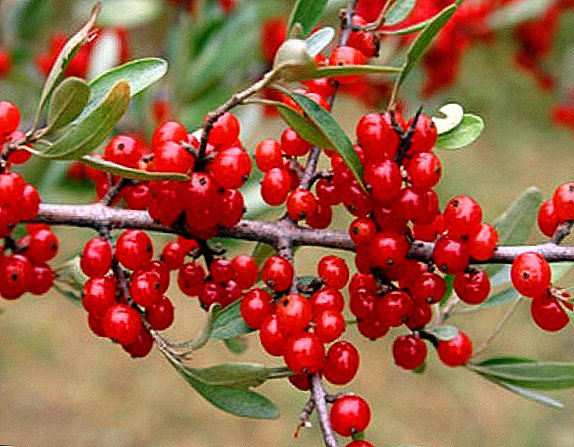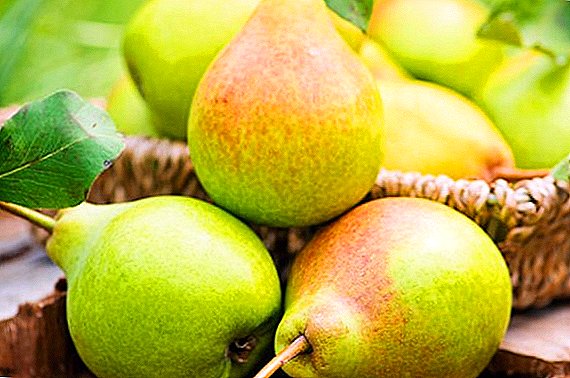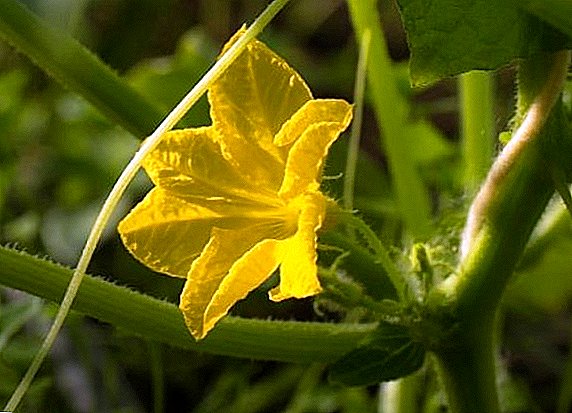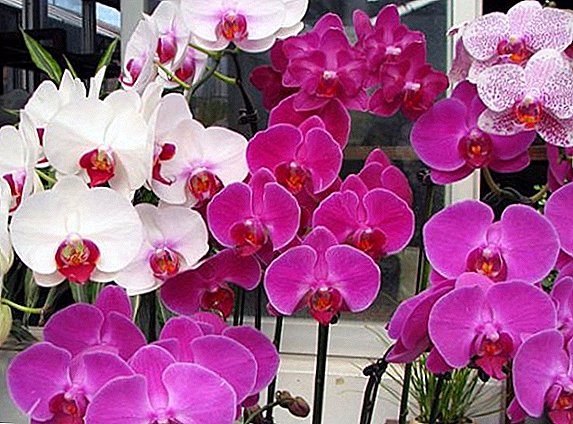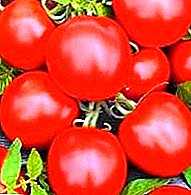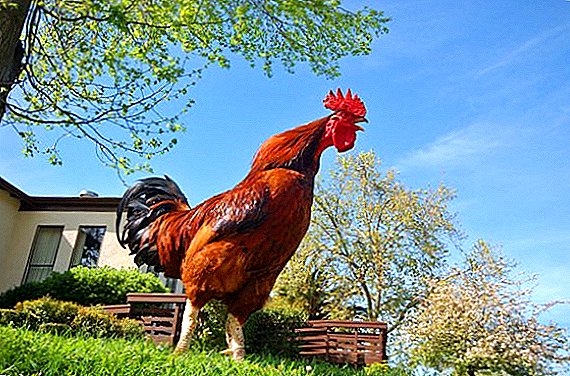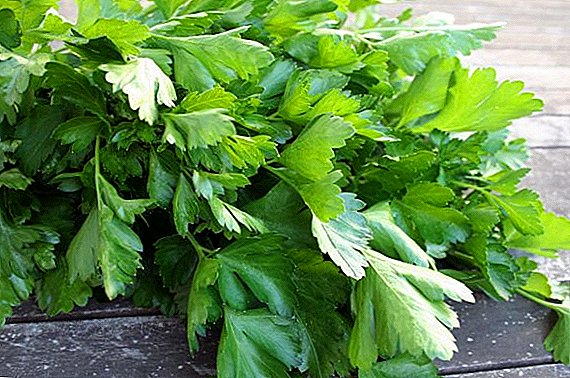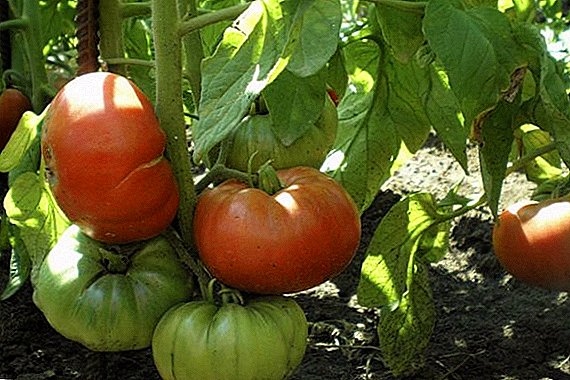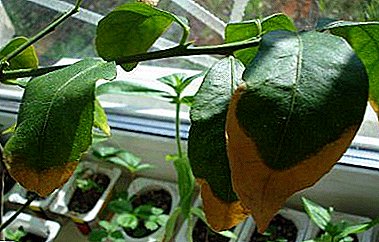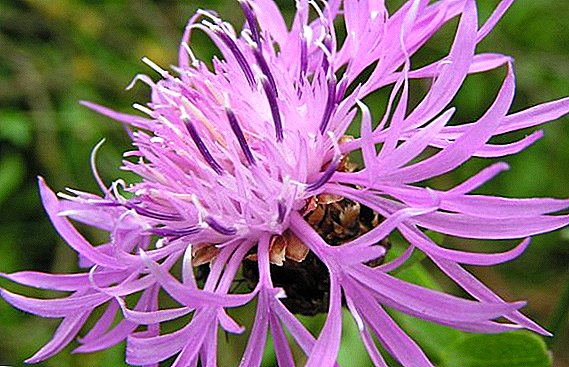 On the meadows there is a huge variety of wild flowers, which are not only pleasing with a beautiful view, but can also be used as medicines. These plants include the Phrygian cornflower, which we describe in our article.
On the meadows there is a huge variety of wild flowers, which are not only pleasing with a beautiful view, but can also be used as medicines. These plants include the Phrygian cornflower, which we describe in our article.
Description and photo
Phrygian Cornflower very similar to its "meadow" relative. It has a branched stem, whose height is 1 meter, sometimes a little more. It is characterized by large baskets on which are lilac-pink flowers. They are represented by two types: funnel-shaped along the edge and tubular in the center.
Important! The flower grows poorly on acidic soil - for planting plants need to make limestone in it.The plant has a ribbed stem, which often has not a green color, but a dark purple. The upper part of the stems and lateral shoots are decorated with flower baskets in the form of balls, wrapped in tightly fitting flowers, painted in brown. Baskets come together and form a corymbose inflorescence.
 The flower has dissected lower petiole leaves. Stem leaves sessile, wide and large, their length is 10-15 cm, and width - 3-4 cm. Characterized by mesh venation. There is slight pubescence on the foliage and stem.
The flower has dissected lower petiole leaves. Stem leaves sessile, wide and large, their length is 10-15 cm, and width - 3-4 cm. Characterized by mesh venation. There is slight pubescence on the foliage and stem.Where grows
The habitat habitat is the river armholes, thickets of shrubs. Often cornflowers can be found near trekhtychinkovyh willows, on water meadows. Also, glades and sparse forests are home to the flower.
Chemical composition
Today, the chemical composition of the cornflower is not fully studied, but This plant is a treasure trove:
- pigment and cyanogenic glycosides;
- anthocyanins;
- saponins;
- tannins;
- essential oil;
- vitamins (ritin, ascorbic acid, etc.);
- trace elements (selenium, manganese, iron, zinc).

Did you know? The name of the flower comes from a guy named Basil, who was in love with a mermaid, and, watching her from the field, was turned into a blue flower, which very much resembled a blue sea surface.Such a rich composition allows the plant to have anti-inflammatory, antiseptic, diuretic and diuretic effects.
Healing properties of cornflower
The plant has been used for medicinal purposes since ancient times. He served as a diuretic, coped well with colds, fevers, and liver diseases. It is advisable to use flowers as an adjuvant therapy if you have the following diseases:
- swelling of different origins;
- biliary dyskinesia;
- cholecystitis and other liver diseases.
When biliary dyskinesia is recommended to use St. John's wort.The plant can be used as an independent tool, or in conjunction with other medical fees. Lotions of cornflower flowers can alleviate the symptoms of such diseases:
- conjunctivitis;
- blepharitis;
- hemeralopia;
- eye fatigue syndrome;
- reduced visual acuity.

When conjunctivitis resort to the help of Ivy-shaped buds, willow, camelite, zhivokost, rue, cuff, raspberry leaves, parsley, acacia, elderberry.Components that make up the plant:
- promote the treatment of gastrointestinal diseases;
- normalize blood sugar levels;
- improve heart function;
- eliminate neuropsychological disorders.
Contraindications
Incorrect use of the plant can harm a person, so you should always consult with your doctor before use.
Important! Dried cornflowers in the sun is not worth it - they will turn white and lose their medicinal properties.It is also not recommended to take cornflower during pregnancy, for uterine bleeding, for children under 12 years old. Prolonged use leads to accumulation of cyanide in the body, which can adversely affect the well-being. Therefore, the maximum period for taking plant-based drugs is 1 week.

Collection and drying of raw materials
To use the cornflowers for medicinal purposes, the collection should be carried out during the flowering period: June - September. Usually medicines are made from flowers.
After collecting the marginal flowers, you need to carefully sort out, remove the receptacle, tubular and faded marginal flowers. Then cornflowers should be put under a canopy, and you need to lay them out in a thin layer.
Store dried plants can be 2 years. It is possible to determine that the flowers were dried correctly by the following features:
- they are odorless;
- they have a bright color;
- have a bitter taste.
Did you know? Cornflower wreath depicted on the flag of Sweden and is a symbol of the state.
The Phrygian cornflower, when properly applied, can help cope with many ailments. The main thing is to follow the recommendations of the doctor and not to self-medicate!


